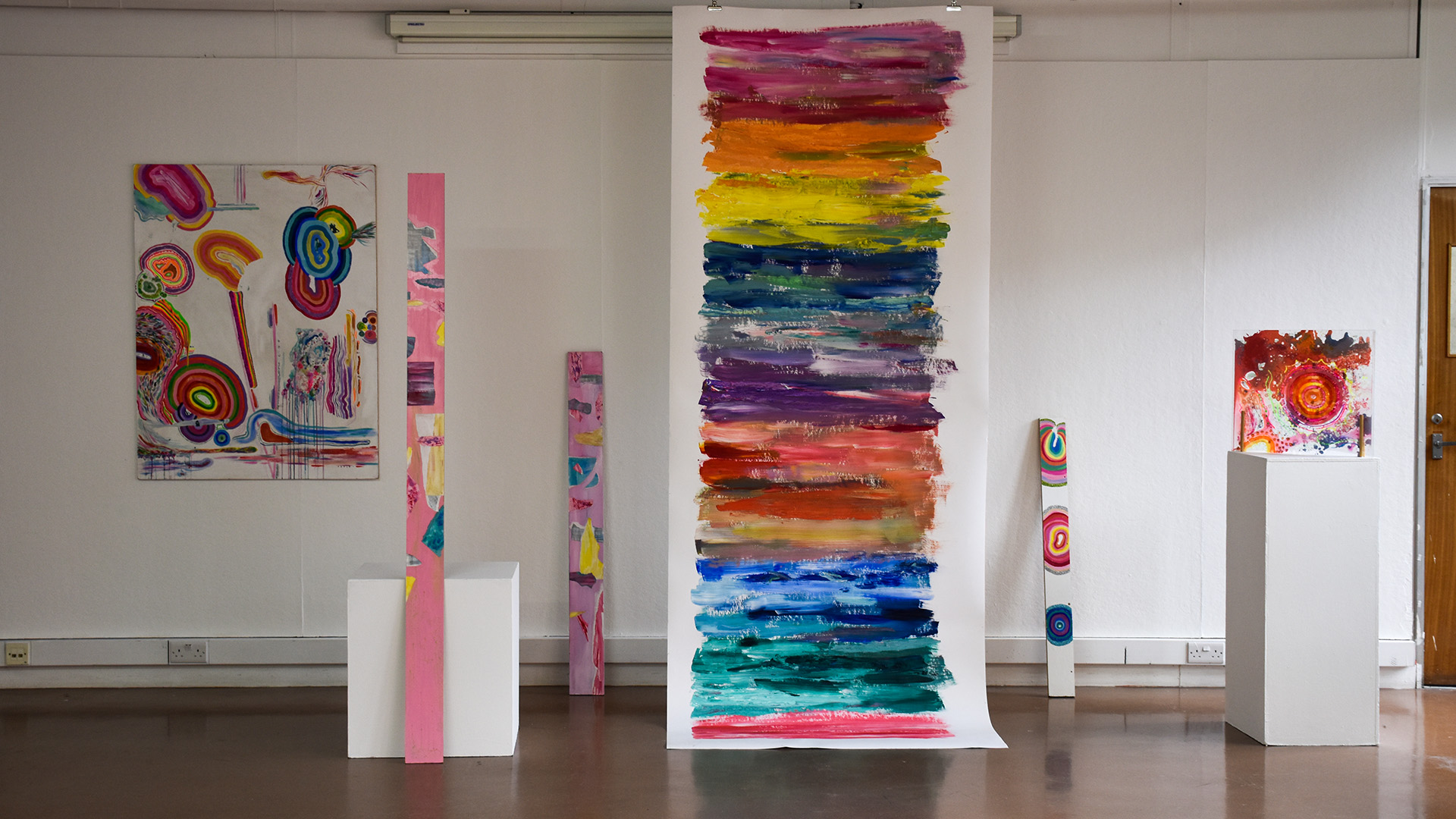Megan Chase,
Primary School Teacher
Spontaneous Imaginative Play
Primary School Teacher
Spontaneous Imaginative Play
It must not be forgotten that the basic law of children’s creativity is that its value lies not in its results, not in the product of creation, but in the process itself. It is not important what children create, but that they do create, that they exercise and implement their creative imagination.
(Lev Vygotsky, 1967)
(Lev Vygotsky, 1967)

I have been engaging in spontaneous art making and inquiring how this method of creation contributes to a more imaginative practice. Embracing impulsiveness and finding joy in the imperfect melding of various media has enabled me to acknowledge the lack of opportunity for this experience in Canadian primary education settings. Art lessons and practice in primary school is often limited to articulated lists of unambiguous instruction. There is little space for children to execute their creative and imaginative ideas or to relish in the sheer pleasure of using their fingers to smear paint across a page without cause.
While hectic crayon marker scribbles and finger-painted works hang imprecisely on the walls of pre-school and kindergarten settings, a dramatic shift occurs when the child progresses to primary school and the formalities of art making encroach on the spontaneous nature of their work. The impermeant quality of a young child’s work allows for the preciousness surrounding the final product to not yet exist. The emphasis is on the child’s discovery through art making rather than form, composition and colour. In my teaching of various primary grade levels, I have been able to observe the dulled, uniform nature that art classes gradually take on as students’ progress through their education.
Reflecting on the delight-centered art making of young children, I have attempted to create with less of a focus on a final outcome, instead honing in on playful discovery. Using a variety of media, I have allowed imagination to override formal convention and have engaged freely with various colours and textures, finding happiness in infinite possibilities.
While hectic crayon marker scribbles and finger-painted works hang imprecisely on the walls of pre-school and kindergarten settings, a dramatic shift occurs when the child progresses to primary school and the formalities of art making encroach on the spontaneous nature of their work. The impermeant quality of a young child’s work allows for the preciousness surrounding the final product to not yet exist. The emphasis is on the child’s discovery through art making rather than form, composition and colour. In my teaching of various primary grade levels, I have been able to observe the dulled, uniform nature that art classes gradually take on as students’ progress through their education.
Reflecting on the delight-centered art making of young children, I have attempted to create with less of a focus on a final outcome, instead honing in on playful discovery. Using a variety of media, I have allowed imagination to override formal convention and have engaged freely with various colours and textures, finding happiness in infinite possibilities.